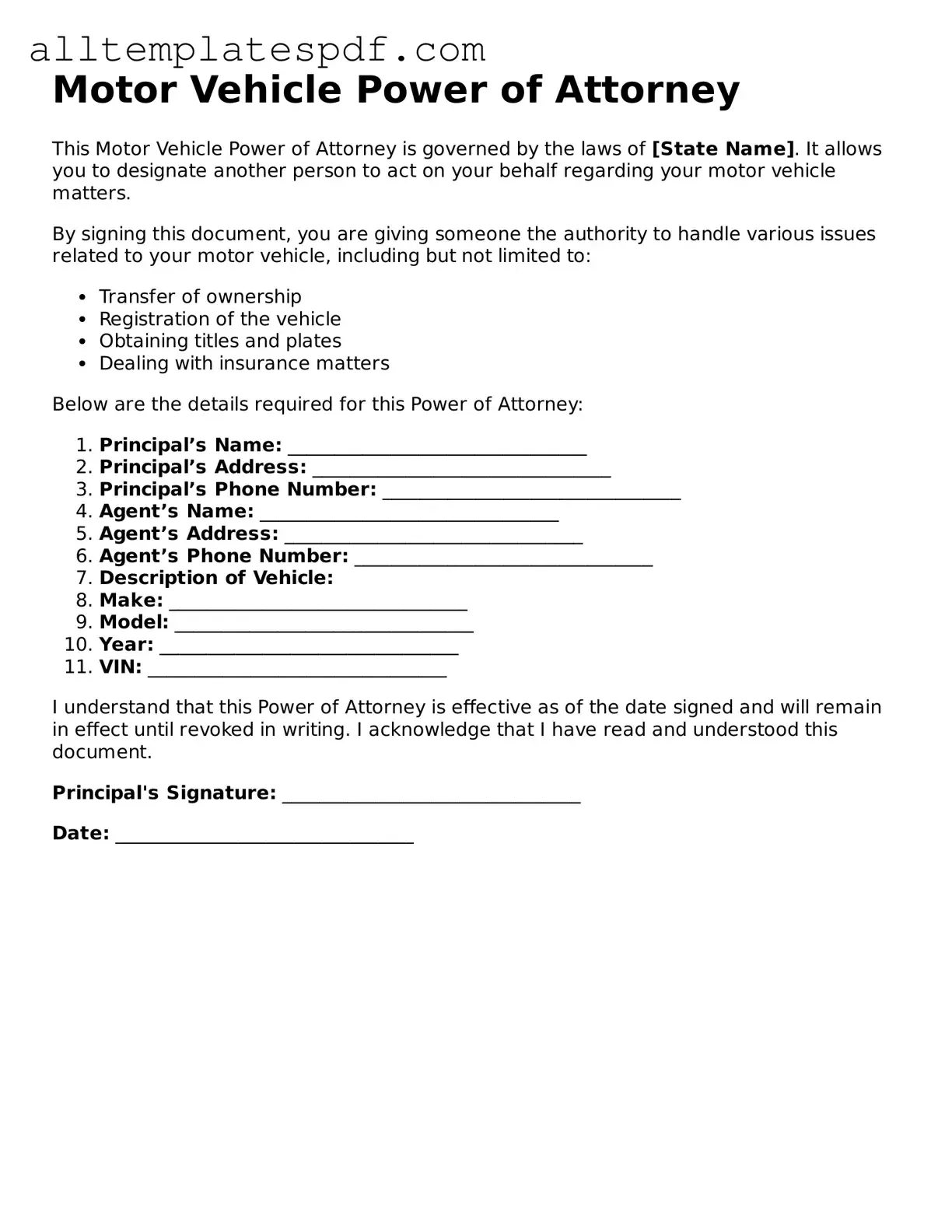Filling out a Motor Vehicle Power of Attorney form can seem straightforward, but many people make common mistakes that can lead to complications down the line. One frequent error is failing to provide complete information about the vehicle. This includes the vehicle identification number (VIN), make, model, and year. Omitting even one detail can render the document ineffective, as it may not clearly identify the vehicle in question.
Another mistake involves not signing the form correctly. Each state has specific requirements for signatures. In some cases, both the principal and the agent must sign the document, while in others, a witness or notarization may be necessary. Neglecting to follow these requirements can invalidate the Power of Attorney, leaving the agent without the authority to act on behalf of the principal.
Many people also overlook the importance of specifying the powers granted to the agent. The form should clearly outline what the agent can and cannot do. For example, the agent may need the authority to sell the vehicle, register it, or transfer ownership. If these powers are not explicitly stated, the agent may face limitations that hinder their ability to manage the vehicle effectively.
Lastly, individuals often fail to keep a copy of the completed form. After submitting the document, it’s crucial to retain a copy for personal records. This ensures that both the principal and the agent have access to the same information and can refer back to the terms outlined in the Power of Attorney. Without a copy, misunderstandings can arise, leading to disputes or confusion regarding the agent's authority.
